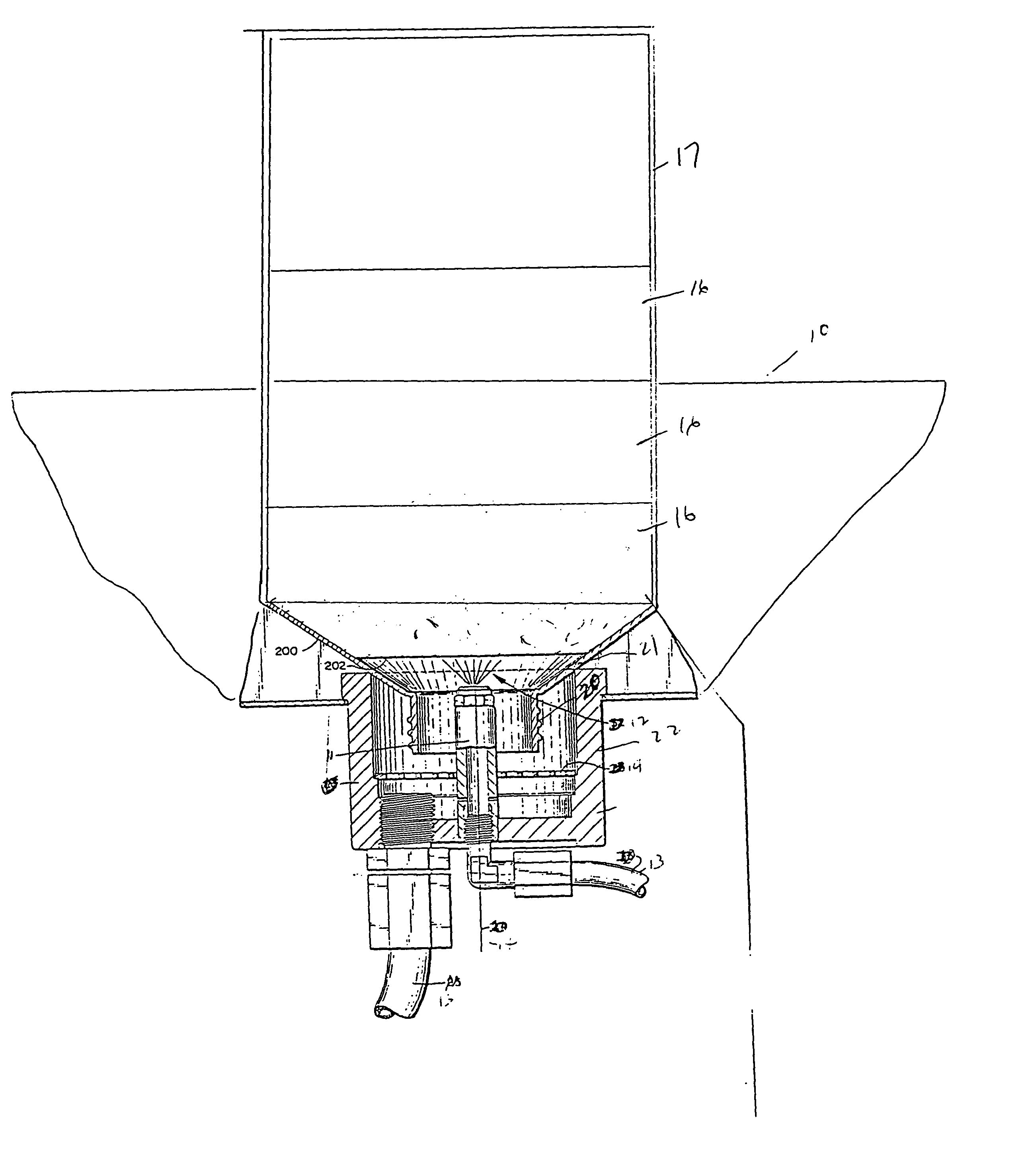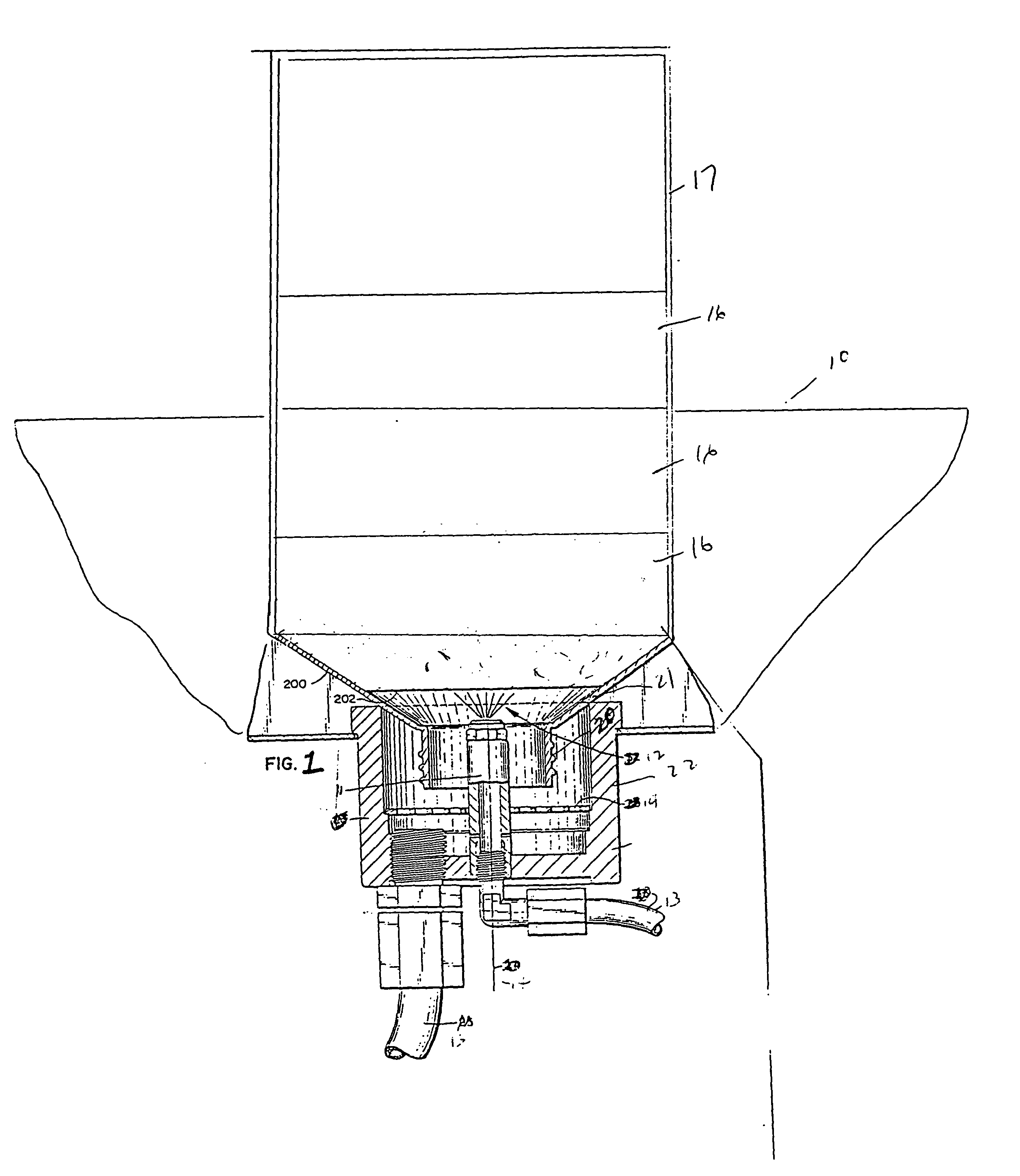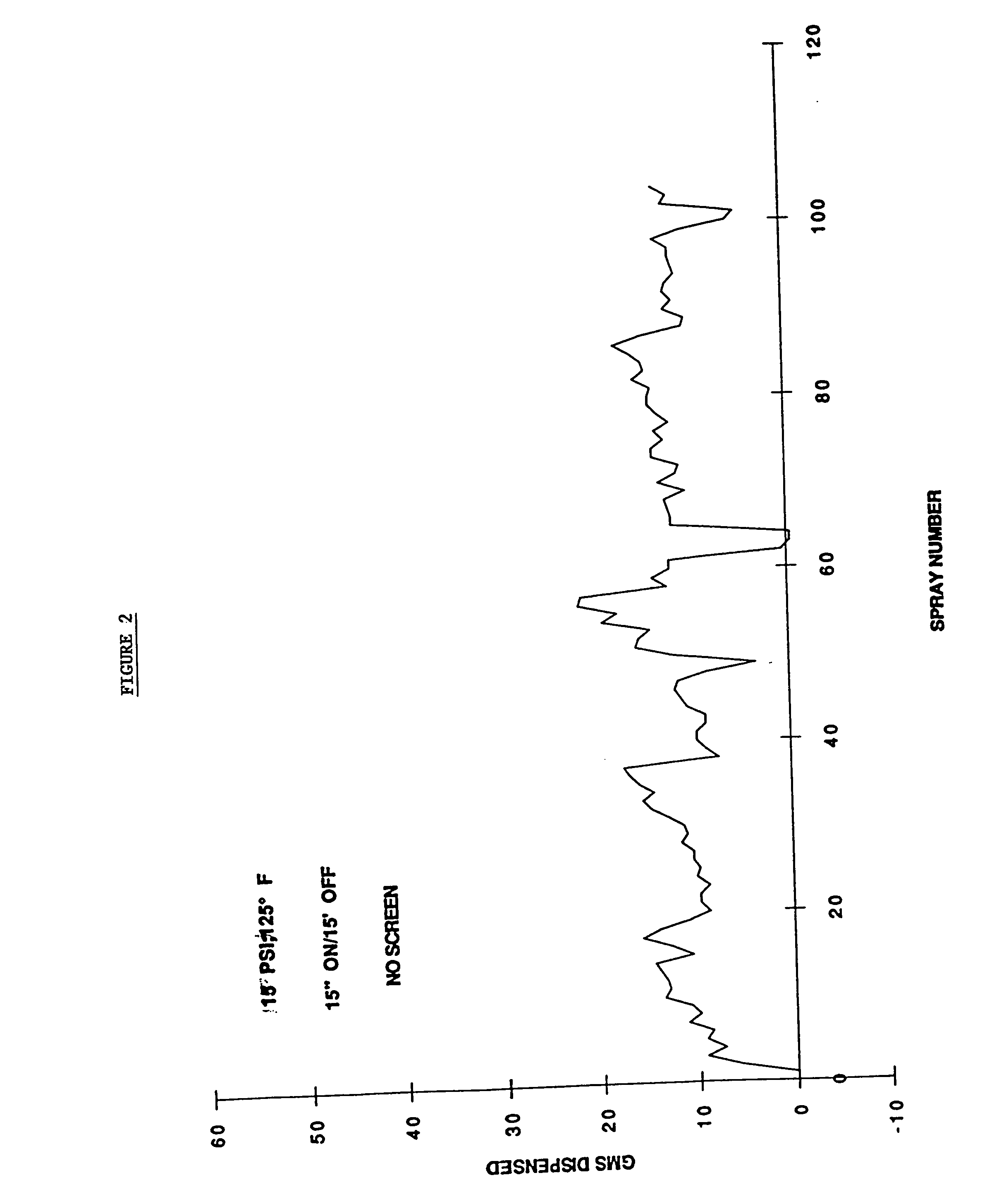Shaped solid comprising oxidant bleach with encapsulate source of bleach
a technology of oxidant bleach and encapsulated source, which is applied in the directions of transportation and packaging, detergent compounding agents, liquid soaps, etc., can solve the problems of unfavorable dispensing and failure to dispense adequate proportions of oxidizing bleach, and achieve the effect of reducing the tendency of chlorine sources
- Summary
- Abstract
- Description
- Claims
- Application Information
AI Technical Summary
Benefits of technology
Problems solved by technology
Method used
Image
Examples
example 1
[0030] A series of shaped solids in the form of a cylinder having a 4 inch diameter and an approximately 1 inch height were made containing about 600 total grams of material. The tablets contained varying proportion of additive materials. The ingredients used to make the tablet were added to a mechanical blender and shaken until uniform. The material was then introduced into a hand tablet compression device. The powder was compressed into a tablet at a pressure of about 11,000 pounds of pressure for a press time of about 30 seconds. The shaped solids produced are shown below in Table I.
1TABLE I 600-Gram, 4-Inch Solid Additives Table Concentration Number of Example Quantity (%) Additives 1 3 1 2 (Organic Binder) 2 3 2 1 (Organic Binder) 3 3 3 2 (Organic Binder) 4 3 1 1 (Organic Binder) 1A 3 1 2 (Organic Binder) 5 3 2 2 (Organic Binder) 6 3 1 1 (Lauric Acid) 7 3 2 1 (Lauric Acid) 8 3 100 1 (Cl.sub.2-Encapsulate) 9 3 10 1 (Lauric Acid) 10 3 10 1 (Carbowax .RTM.) 11 3 30 1 (Cl.sub.2-Enc...
PUM
| Property | Measurement | Unit |
|---|---|---|
| diameter | aaaaa | aaaaa |
| thickness | aaaaa | aaaaa |
| mass | aaaaa | aaaaa |
Abstract
Description
Claims
Application Information
 Login to View More
Login to View More - R&D
- Intellectual Property
- Life Sciences
- Materials
- Tech Scout
- Unparalleled Data Quality
- Higher Quality Content
- 60% Fewer Hallucinations
Browse by: Latest US Patents, China's latest patents, Technical Efficacy Thesaurus, Application Domain, Technology Topic, Popular Technical Reports.
© 2025 PatSnap. All rights reserved.Legal|Privacy policy|Modern Slavery Act Transparency Statement|Sitemap|About US| Contact US: help@patsnap.com



